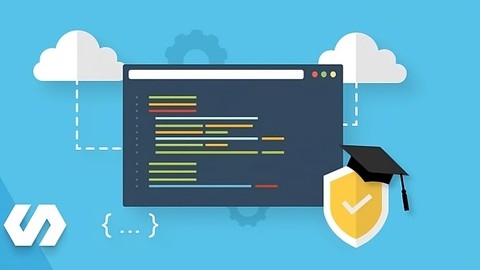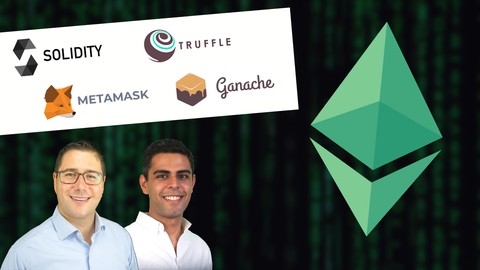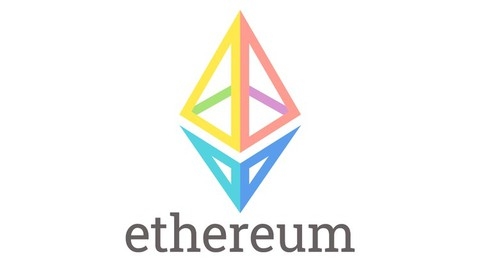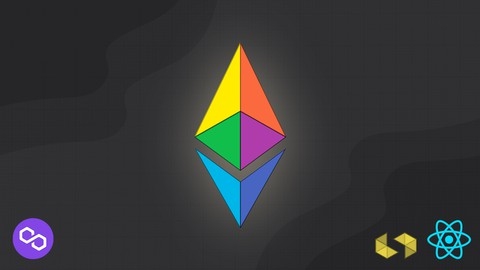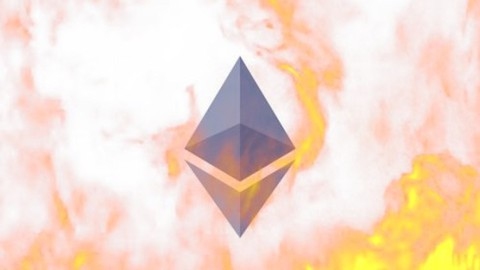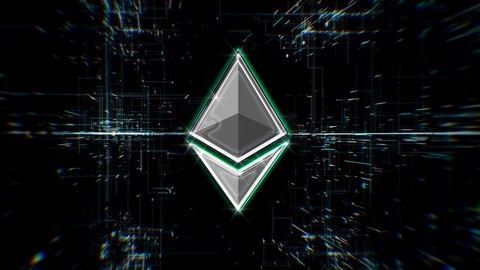Solidity is the programming language for smart contracts, the building blocks of decentralized applications (dApps) on the Ethereum blockchain.
Learning Solidity opens up a world of opportunities to create innovative solutions in finance, supply chain management, gaming, and beyond.
It empowers you to participate in the decentralized future and build applications that are secure, transparent, and resistant to censorship.
Finding the right Solidity course on Udemy can be challenging, with so many options available.
You want a course that’s comprehensive, engaging, and taught by experts, but also fits your learning style and goals.
You’re looking for a program that goes beyond the basics, providing practical experience and hands-on projects to solidify your understanding.
For the best Solidity course overall on Udemy, we recommend Ethereum and Solidity: The Complete Developer’s Guide.
This comprehensive program is designed to take you from beginner to confident developer, covering everything from the fundamentals of Ethereum to advanced concepts like gas optimization and building real-world dApps.
The instructor’s clear explanations, practical projects, and supportive community make this course an ideal choice for anyone looking to master Solidity.
While “Ethereum and Solidity: The Complete Developer’s Guide” stands out as our top pick, there are other great options available on Udemy.
Keep reading to explore our recommendations for different learning levels, specific use cases, and even advanced topics like Yul and Assembly.
Ethereum and Solidity: The Complete Developer’s Guide
You will start by learning the fundamentals of Ethereum, including its history, accounts, transactions, and the concept of smart contracts.
The course then dives into Solidity programming, teaching you how to write, test, and deploy smart contracts using tools like Remix, Mocha, and Web3.js.
You’ll build your first contract and learn about key Solidity concepts such as functions, data types, mappings, and structs.
The course also covers essential topics like gas, transactions, and deployment to test networks like Rinkeby using Infura and MetaMask.
As you progress, you’ll build increasingly complex projects, starting with a simple lottery contract and moving on to a crowdfunding application inspired by Kickstarter.
These projects will teach you how to design and implement smart contracts, handle user interactions, and integrate with front-end technologies like React and Next.js.
The course emphasizes hands-on learning, with each project accompanied by a boilerplate code and a series of tests to guide you through the development process.
You’ll learn how to set up a development environment, compile and deploy contracts, write tests using Mocha and Web3.js, and build interactive user interfaces with React and Next.js.
Throughout the course, you’ll gain experience with essential tools and libraries like Node.js, npm, Git, Semantic UI React, and the Web3.js library for interacting with Ethereum nodes.
The instructor also covers advanced topics like function modifiers, mappings vs. arrays, and handling contract state.
Ethereum Blockchain Developer Bootcamp With Solidity (2024)
You will start by learning the fundamentals of blockchain technology, including transactions, wallets, and cryptographic hashing.
The course then dives deep into Solidity programming, covering topics like variables, mappings, structs, exceptions, constructors, and more through hands-on labs and coding exercises.
Several real-world projects are included, such as building a shared wallet, a supply chain application, and an ERC20 token sale.
You’ll gain practical experience with tools like Remix IDE, Truffle, OpenZeppelin, Web3.js, and MetaMask.
The course also covers advanced concepts like debugging, unit testing with Mocha and Chai, deploying to test networks, and verifying source code on block explorers.
Additionally, you’ll learn about non-fungible tokens (NFTs) and develop your own ERC721 token using OpenZeppelin.
The course introduces you to Truffle, Hardhat, and Foundry frameworks for smart contract development, testing, and deployment.
You’ll also explore account abstraction using ERC-4337, working with tools like Foundry, Next.js, Wagmi, Viem, Stack Up, Candide, and Alchemy.
Throughout the course, you’ll work on practical assignments and projects to reinforce your understanding of Ethereum development concepts.
The instructor provides step-by-step guidance, explanations, and best practices to help you become proficient in building decentralized applications on the Ethereum blockchain.
Getting Started with Web3 Development
You’ll start by understanding the fundamental concepts behind blockchain technology, including its key components, cryptography principles, and how it represents value in a decentralized manner.
This solid foundation will help you grasp the bigger picture before diving into the technical aspects.
Once you have the basics covered, the course will guide you through setting up the development environment on different operating systems like MacOS, Windows, and Linux.
You’ll learn how to use popular tools like Truffle, Ganache, and MetaMask, which are essential for building and testing Ethereum-based applications.
But the real meat of the course lies in its hands-on approach.
You’ll build a decentralized application called ChainList from scratch, covering every aspect of the development process.
This includes writing and deploying smart contracts, conducting thorough testing, and integrating with a user-friendly frontend.
Along the way, you’ll gain practical experience with key concepts like gas, transactions, blocks, and opcodes.
The course also covers advanced topics like smart contract events, modifiers, and inheritance, ensuring you have a well-rounded understanding of Solidity development.
One of the standout features is the focus on deploying your applications to real-world environments.
You’ll learn how to deploy your contracts to test networks like Rinkeby and even the main Ethereum network, using services like Infura.
This real-world experience is invaluable for aspiring blockchain developers.
The course also keeps you up-to-date with the latest developments in the Ethereum ecosystem, covering updates like the Byzantium Hardfork and the transition from Truffle 4 to Truffle 5.
Master Ethereum & Solidity Programming From Scratch in 2024
You’ll start by learning the fundamentals of the Ethereum blockchain platform, including its nodes, accounts, addresses, and the Ether cryptocurrency.
The course covers key concepts like gas, gas price, gas limit, and opcodes, as well as exploring Ethereum’s transaction structure and block explorer.
Transitioning to the Solidity programming language, you’ll dive into the Remix IDE, contract compilation, and deployment on both the JavaScript VM and the Rinkeby testnet using MetaMask.
The course methodically covers Solidity’s syntax, state and local variables, functions, constructors, and data types like booleans, integers, arrays, bytes, strings, structs, enums, and mappings.
You’ll also learn about storage vs. memory, global variables, contract addresses and balances, visibility specifiers, and function modifiers.
The real highlight of the course is its five hands-on projects.
You’ll build a lottery smart contract, an auction contract, a crowdfunding contract, an ERC20 token contract, and even an Initial Coin Offering (ICO) contract.
Along the way, you’ll learn about random number generation, withdrawal patterns, contract inheritance, abstract contracts, and interfaces.
The course also includes quizzes and challenges to reinforce your learning, as well as appendices on topics like IPFS (InterPlanetary File System) and installing Linux.
You’ll have access to an online community for support and can even receive a bonus gift upon completion.
The Complete Solidity Course - Blockchain - Zero to Expert
The course starts by guiding you through setting up your development environment and introducing you to the fundamentals of Solidity, the programming language for Ethereum smart contracts.
You will learn how to write, compile, and deploy your first smart contract, grasping concepts like variables, data types, functions, and control structures along the way.
The course dives deep into core Solidity features such as conditional logic, loops, strings, arrays, structs, enums, and mappings, ensuring you have a strong grasp of these building blocks.
As you progress, you’ll explore advanced topics like inheritance, abstract contracts, interfaces, and libraries, empowering you to build more complex and modular smart contracts.
The course also covers crucial aspects of smart contract security, teaching you about potential vulnerabilities, coding patterns for secure development, and techniques like the withdrawal pattern and restricted access modifiers.
One of the standout features of this course is its emphasis on practical exercises and real-world examples.
You’ll build a cryptocurrency token, implement an auction DApp, and work with oracles and cryptographic functions, solidifying your understanding through hands-on projects.
The course also delves into the inner workings of the Ethereum Virtual Machine (EVM), assembly language, and error handling mechanisms like require, revert, and assert.
You’ll gain insights into advanced topics like global variables, time and date handling, and ether unit conversions.
Throughout the course, you’ll have access to a supportive online community of developers and mentors, fostering collaboration and knowledge sharing.
Complete DApp - Solidity & React - Blockchain Development
You’ll start by learning the fundamentals of DApps, blockchain technology, and the Ethereum ecosystem.
This includes understanding the differences between centralized and decentralized systems, as well as getting familiar with essential tools like the Remix IDE, text editors, and the Solidity programming language.
From there, you’ll dive into Solidity and smart contract development.
You’ll learn how to write, compile, and deploy smart contracts, working with variables, functions, modifiers, and more.
The course covers important concepts like arrays, mappings, and inheritance, guiding you through building your first DApp from scratch – a decentralized will application.
The course also introduces you to the world of crypto tokens and non-fungible tokens (NFTs).
You’ll build your own ERC20 token and explore real-world examples like the KryptoBirdz NFT collection on OpenSea.
Along the way, you’ll gain insights into the Ethereum Virtual Machine (EVM), blockchain mechanics like mining and consensus algorithms, and the principles of decentralized finance (DeFi).
To facilitate practical learning, the course walks you through setting up a complete DApp development environment, including tools like MetaMask, Ganache, Node.js, and Truffle.
You’ll build a yield farming DApp, implementing features like token staking, unstaking, and rewards.
Testing frameworks like Mocha and Chai are covered, ensuring you can write robust and secure smart contracts.
The front-end development section focuses on React, teaching you how to build user interfaces and integrate them with Web3 and smart contracts.
You’ll learn about state management, props, and how to load and display blockchain data in your DApp.
The course also includes additional modules on topics like particle animations, timers, and airdrop implementations, providing opportunities for further practice.
Finally, you’ll build a voting DApp, solidifying your understanding of smart contract development, authentication, and blockchain interaction.
Throughout the course, you’ll have access to a supportive community, mentors, and opportunities to engage with live Web3 projects, ensuring a well-rounded and practical learning experience.
Ethereum with Solidity, React & Next.js - The Complete Guide
You will start by learning the fundamentals of blockchain technology, smart contracts, and the Ethereum Virtual Machine (EVM).
The course dives deep into Solidity, the programming language used for writing smart contracts on Ethereum.
You will learn about data types, functions, modifiers, inheritance, and other essential Solidity features.
Additionally, you will gain hands-on experience with tools like Truffle, Ganache, and Remix for developing, testing, and deploying smart contracts.
Moving on, you will explore Web3.js, a library that allows you to interact with Ethereum nodes and smart contracts from client-side applications.
You will build a React application that connects to MetaMask, a popular Ethereum wallet, enabling users to interact with your dApp seamlessly.
The course also covers Next.js, a React framework for building server-side rendered (SSR) applications.
You will learn how to integrate Web3.js with Next.js, creating a full-fledged dApp with features like course marketplaces, managed courses, and user authentication.
Throughout the course, you will work on two major projects: a decentralized course marketplace and an adoption platform for pets on the Polygon network.
These projects will reinforce your understanding of key concepts and provide you with practical experience in building real-world dApps.
The course also includes sections on testing smart contracts using tools like Truffle and Hardhat.
You will learn how to write unit tests, catch reverts, and ensure your contracts function as intended before deploying them to live networks like Ropsten and Sepolia.
Additionally, you will gain insights into advanced topics like reverse engineering transactions, Merkle trees, Radix trees, and the Ethereum Patricia tree implementation.
These concepts will deepen your understanding of the inner workings of the Ethereum blockchain.
Advanced Solidity: Understanding and Optimizing Gas Costs
You’ll start with an overview of gas costs, learning how to calculate the cost of an Ethereum transfer.
The course covers heavy and light functions, block limits, and gas-efficient chains, giving you a solid foundation.
It also dives into storage slots, opcodes, and their associated gas costs, as well as function selectors and the cost of doing nothing in terms of opcodes, transaction data, and memory costs.
The course explores non-payable functions, unchecked arithmetic, gas limits, and the EIP 1559 fee market change.
You’ll also learn about the Solidity optimizer, which can help optimize your code for gas efficiency.
Storage is a significant focus, with sections on storage overview, smaller integers, unchanged storage values, arrays, refunds for setting values to zero, ERC20 transfers, storage costs for files, structs, strings, variable packing, and array lengths.
Memory costs are another key topic, covering memory vs. calldata, memory explosion, and the fact that memory is never cleared.
The course also covers Solidity tricks like function names, comparison operators, bit shifting, reverting early, short-circuiting, and precomputing.
Throughout the course, you’ll work on practice problems and gas puzzles to reinforce your understanding of gas optimization techniques.
TOTAL: Building an Ethereum Blockchain DApp using Solidity
You will start by understanding the fundamentals of blockchain technology, including its history, consensus mechanisms, and the role of cryptocurrencies.
Next, you will dive into the Ethereum ecosystem, exploring its applications across various industries like finance, identity management, and government.
The course covers key Ethereum concepts such as smart contracts, the Ethereum Virtual Machine (EVM), and gas, which fuels code execution.
To build dApps, you will learn to set up an Ethereum development environment, including tools like Geth (blockchain client), Ganache (test blockchain), Truffle (development framework), and Visual Studio Code.
You will also learn to use MetaMask, a popular Ethereum wallet.
A significant portion of the course focuses on mastering Solidity, the programming language for writing smart contracts on Ethereum.
You will learn data types, modifiers, control flow, error handling, and gas optimization techniques.
The course provides hands-on labs to reinforce these concepts by building a supply chain dApp.
Testing is crucial for dApp development, and the course covers various testing strategies, including command-line and JavaScript-based testing frameworks.
You will learn to deploy your dApps to test blockchains and the live Ethereum mainnet using services like Infura.
The course also explores integrating non-blockchain applications with Ethereum, covering topics like blockchain and database storage, execution flow, and design considerations for incorporating blockchain technology.
Throughout the course, you will gain practical experience by building a supply chain dApp, implementing token and smart contract functionalities, handling events, and designing for security and minimal functionality.
The hands-on labs and projects will reinforce your understanding of key concepts like ownership, consensus, hashes, mining, and distributed processing.
Advanced Solidity: Yul and Assembly
You will start with an introduction to types and basic operations in Yul.
The course then dives into the intricacies of storage slots, offsets, bitshifting, and how arrays and mappings are stored.
It explores memory management, including memory operations, how Solidity uses memory, and the dangers of memory misuse.
The course covers essential concepts like return values, require statements, tuples, and the keccak256 hash function.
You’ll learn about logs and events, which are crucial for monitoring and debugging smart contracts.
Inter-contract calls are also covered, including calling other contracts, handling dynamic length arguments, and transferring value.
One of the highlights is learning about contracts without Solidity, where you’ll create a 100% Yul contract.
The course also touches on practical issues like storing data in contract bytecode and resolving Etherscan issues.
A significant portion is dedicated to an in-depth ERC20 example, spanning six parts.
This hands-on project will solidify your understanding of Yul and Assembly by implementing a real-world token standard.
While the course is comprehensive, it acknowledges that there are topics it doesn’t cover, keeping you aware of the limitations.
